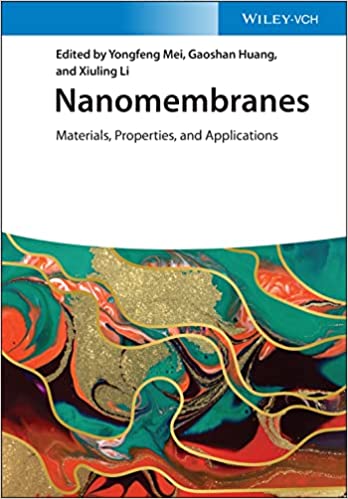English | 2022 | ISBN: 3527344462 | 480 Pages | EPUB PDF (True) | 147 MB
Nanomembranes
Provides a thorough overview of the field of nanomembranes, covering materials science, fabrication processes, properties, and applications
In recent years, the unique nature of the nanomembrane has led to new technology and applications in areas including flexible electronics, photonics, robotics, biology, microelectromechanical systems, and lab-on-a-chip (LOC) devices. Highly suitable for assembling three-dimensional structures, the nanomembrane can be integrated into devices and systems using conventional thin film technology.
Nanomembranes: Materials, Properties, and Applications is an up-to-date review of recent advances in the rapidly expanding area within nanoscience and technology. Edited by leading researchers, the book covers the fabrications, properties, applications, design concepts, and challenges of nanomembranes and other nano-scale assembled structures. In-depth chapters address topics including three- and four-dimensional origami, nanomembrane-based transient electronics, development of inorganic flexible electronics, magnetic nanomembranes, bio-applications of three-dimensional scaffolds, nanomembrane-based micro and nanorobots, passive electronic components based on self-rolled-up nanomembranes, and more.
Covers nanomembranes as well as nanostructures made from semiconductor, metal, insulator, polymer, and composite materials
Provides broad overview of two-dimensional materials and assembled structures including origami and kirigami structures
Explores applications of nanomembrane such as batteries, supercapacitors, robotics, electronics, and cell scaffolding
Discusses nanomembranes made from polymeric materials, mechanical forces during deformation, and assembly of nanomembranes,
Addresses monolayer two-dimensional materials such as graphene and transition metal dichalcogenides
Nanomembranes: Materials, Properties, and Applications is an invaluable resource for material scientists, engineers, physicists, and chemists in academia and industry, and an excellent text for graduate students and researchers across disciplines with interest in the rapidly growing field.
DOWNLOAD





 Reply With Quote
Reply With Quote
